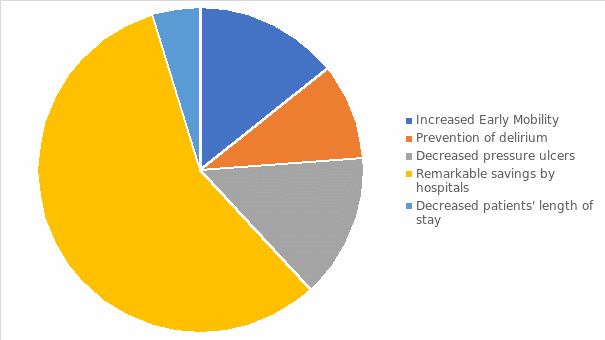Introduction
The concepts “productive” and “nonproductive” have been gradually infiltrating the world of modern medicine. From a conventional stance, productivity refers to the efficiency of an employee, equipment, or system in transforming inputs into outputs. On the other hand, nonproductive time is that which is indirectly related to production, service delivery processes, or execution of organizational tasks (Altman & Rosa, 2015). Based on these two definitions, the medical community’s view of productivity is limited to the time spent providing direct medical services at the bedside. Time spent by nurses away from the patient for instance during training, assessment, planning and evaluating patient care alternatives is regarded as nonproductive. As a result, many medical institutions have put more emphasis on resource management and reduction of “downtime” to lower costs while attempting to provide quality services. A breakdown of a nursing journal which attempted to redefine productivity via an AACN CSI academy project survey form the basis of this paper.
Objectives
There is a need to approach productivity aspects in nursing from a more elaborate stance. This strategy may enhance patients’ outcomes and lessen financial losses attributed to illnesses acquired in hospitals. Therefore, a nurse-oriented project pioneered by the AACN program was used to accomplish the following objectives.
- To assess patients’ outcomes as evidenced by measurable improvements during productive operations.
- To identify a reliable unit-based project through examination of pre- and post-outcome data.
- To determine the financial impact of nurse-centred projects on medical institutions and redefine productive actions in nursing. The section below highlights the survey’s methodology used to achieve the fore cited objectives.
Background Methods
Project participants used the following baseline techniques (background methods) to collect pre- and post-outcome data and determine the financial effects of the project on their units and institutions.
- Use of workshops: Participants were required to attend eight workshops organized by AACN faculty. Each of these sessions ended with an innovation conference whereby each team’s accomplishments were celebrated and disseminated to the wider healthcare fraternity.
- Use of online surveys: Participants were asked to share their project resources, insights, and results with an online database at AACN.
By extending the scope of innovation beyond nurses and their institutions, these methods were capable of challenging nursing innovation across the industry. The programs were undertaken in the hospitals where the nurses were directly employed so that learning could be included in pre-existing patient care activities. The section that follows discusses the outcomes obtained after the survey.
Survey Results
The survey’s results included delirium prevention among patients, improved mobility, a reduction in: ulcers, UTI infections caused by catheters, circulatory system infections, and pneumonia spurred by ventilators. Additionally, patients’ duration of stay at the hospital, ventilators and catheters reduced thanks to nurse-driven initiatives implemented in the productive program. Hospitals that took part in the survey, on the other hand, reported cost savings, thus making the survey’s findings applicable to other therapeutic areas inside the hospital. The survey, as conducted by the AACN CSI Academy program, resulted in significant savings for participating hospitals estimated at $28 million (Altman & Rosa, 2015). Figure 1. below summarizes the forecited results.

Summary
The Clinical Scene Investigator Academy, founded by the American Association of Critical-Care Nurses (AACN), is tailored toward enabling nurses at the bedside to polish their leadership and innovative abilities. This academy focuses on maintaining long-lasting change to enhance favourable patient outcomes. The academy, as highlighted in the journal, assists clinical nurses in developing abilities that quantitatively indicate how nonproductive time is a misconception that hinders obtaining the best possible patient outcomes.
Implications
Several critical implications can be deduced from the journal. Firstly, there is a need to broaden the conventional definition of productivity as the nursing profession progresses beyond the boundaries of unifocal bedside care to encompass the development of new knowledge and nurse-driven leadership initiatives. This idea should entail not only the execution of the intervention but the planning and assessment as well. This is necessary for the effective delivery of high-quality patient care. Secondly, to redefine nursing practices as “productive,” nurses can collect pre- and post-outcome data, design and implement a unit-based project, and determine the financial impact of their project on their institutions (Altman & Rosa, 2015). Nurses are not being unproductive when they get together to discuss existing unit-based efforts, identify needs, alter program strategies, and assess health outcomes.
Conclusion
Nurse leaders must openly support the necessity of a healthy and productive work environment, exemplify it, and involve other stakeholders in its realization. Additionally, healthcare agencies such as AACN may help clinical nurses enhance their capabilities and impact as clinical leaders. The former can use the clinical nurse’s skills to improve patient care and save operational costs by acting as change agents to drive transmutability in the productivity aspects of nursing. This is because nurses have a substantial impact on patients’ prognoses, making them true innovators.
Reference
Altman, M., & Rosa, W. (2015). Redefining “time” to meet evolving demands.Nursing Management, 46(5), 46-50.